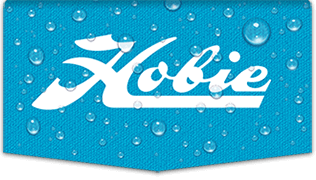I've been meaning to post a conclusion to this thread. It's a happy ending to the story. I found the leak by just floating the hull in knee deep water and very methodically and slowly scanning every square inch. I also was watching the inside of the hull through the hatches to analyze where the flow of water seemed to be coming from.
Eventually I spotted a crack in the front 'pocket' of where the rear mirage drive pedals sit. At first glance it just looked like a scratch in the plastic, but closer inspection revealed a very small crack, sort of in the shape of a letter "H".


Fixing it ended up being no small task... To start, I was a total newbie to plastic welding. The spot was very hard to work on because it's in such a deeply recessed hole, and the utmost care needed to be taken to not damage the surrounding area with a careless hand and a soldering iron. I also wanted the repair to look at least somewhat passable, as well as being strong. I practiced on a bucket lid for quite a while before attempting the actual repair. Although my first fix worked as far as stopping the water ingress, I had to re-do the repair many, many times in order to have it be fully functional. Why, you might wonder? Well, it turns out that this particular spot was molded very precisely, and with very little tolerance for it to function properly with the pedals. When I made the repair, the added width of the mesh plus the new plastic lifted the floor high enough that the mirage drive no longer would click into place... One CAM would lock, but not the other.
I had to keep carefully pushing the mesh down with a hot iron, and re-shaping the plastic to try to work it back to being close enough to the original 'height' that the drive would finally click in... I would get close, then go in with sandpaper and keep working the plastic down on the spots where it was still binding, until *finally* I got it to work properly. There were snags -- my first two irons just stopped working for some reason (cheap models from Amazon), and finally the third one worked well. Sometimes I would get the drive to finally fit, but then realized the mesh had become exposed from sanding (which may have been fine, but I wasn't sure if it may corrode over time), so then I had to sink it in a little deeper and recover it with new plastic, and work the spot down again with sandpaper until it once again fit...

Finally finished:

I know, this post is agonizingly tedious, which is an accurate reflection of what the repair was. I expected it to be quick and easy... maybe a couple hours at most, as almost anyone looking from an outside point of view would assume. Haha, ya right -- after having done thousands of little jobs like this in my life, I should know better by now than to expect anything to be easy... especially when at the beginning of the learning curve on a new skill. It would be much easier if I were to do it again, with the experience I now have (he thinks, consoling his future self).
Moving on -- the TI is fully functional now and doesn't leak at all. I've made many other little restorations as well: new bungies, 303 protectant, replaced a lost sail baton, bought a hand held trailer, etc. etc. It's incredibly fun and fast at times, and mellow and relaxing at others. I have the old style inflatable seats and I find them perfectly comfortable... What a cool ride -- completely what I had hoped for after reading about these for over a year. Cheers everyone, and thanks for all the input and help!








